
Potomac Heights is a census-designated place (CDP) in Charles County, Maryland, United States. The population was 1,117 at the 2010 census. It has a volunteer fire department and numerous older rambler homes built for workers at the nearby U.S. Navy munitions plant in Indian Head.
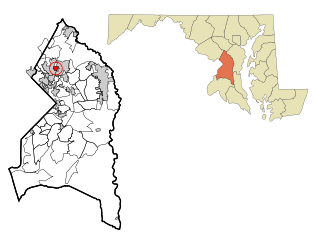
Berwyn Heights is a town in Prince George's County, Maryland, United States. Per the 2020 census, the population was 3,345. It is bordered by College Park to the west, Greenbelt to the northeast, and Riverdale Park to the south.

Greenbelt is a city in Prince George's County, Maryland, United States, and a suburb of Washington, D.C. At the 2020 census, the population was 24,921.
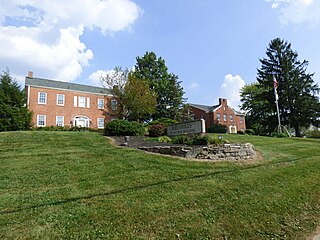
Greenhills is a village in Hamilton County, Ohio, United States. The population was 3,741 at the 2020 census. A planned community, it was established by the United States government during the Great Depression. Most of the village is a National Historic Landmark for its history as a planned modernist community.

New Morgan is a borough in Berks County, Pennsylvania, United States. The population was 71 at the 2010 census.
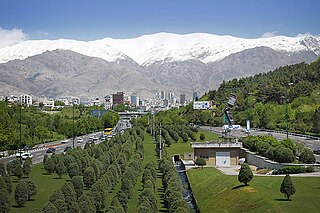
A green belt is a policy, and land-use zone designation used in land-use planning to retain areas of largely undeveloped, wild, or agricultural land surrounding or neighboring urban areas. Similar concepts are greenways or green wedges, which have a linear character and may run through an urban area instead of around it. In essence, a green belt is an invisible line designating a border around a certain area, preventing development of the area and allowing wildlife to return and be established.

A Hooverville was a shanty town built during the Great Depression by the homeless in the United States. They were named after Herbert Hoover, who was President of the United States during the onset of the Depression and was widely blamed for it. The term was coined by Charles Michelson. There were hundreds of Hoovervilles across the country during the 1930s.

The Farm Security Administration (FSA) was a New Deal agency created in 1937 to combat rural poverty during the Great Depression in the United States. It succeeded the Resettlement Administration (1935–1937).

Rexford Guy Tugwell was an American economist who became part of Franklin D. Roosevelt's first "Brain Trust", a group of Columbia University academics who helped develop policy recommendations leading up to Roosevelt's New Deal. Tugwell served in FDR's administration until he was forced out in 1936. He was a specialist on planning and believed the government should have large-scale plans to move the economy out of the Great Depression because private businesses were too frozen in place to do the job. He helped design the New Deal farm program and the Resettlement Administration that moved subsistence farmers into small rented farms under close supervision. His ideas on suburban planning resulted in the construction of Greenbelt, Maryland, with low-cost rents for relief families. He was denounced by conservatives for advocating state-directed economic planning to overcome the Great Depression.

The Resettlement Administration (RA) was a New Deal U.S. federal agency created May 1, 1935. It relocated struggling urban and rural families to communities planned by the federal government. On September 1, 1937, it was succeeded by the Farm Security Administration.
Scan Furniture was a co-operative furniture chain that operated six stores in the metropolitan Baltimore-Washington, D.C. area selling modern Scandinavian furniture.
Abraham Chasanow was a United States government employee who was suspended from employment in July 1953, during the McCarthy era, on the grounds that he was a security risk. He was later reinstated.

The Greenbelt Historic District is a national historic district located in Greenbelt, Prince George's County, Maryland, United States. The district preserves the center of one of the few examples of the Garden city movement in the United States. With its sister cities of Greenhills, Ohio and Greendale, Wisconsin, Greenbelt was intended to be a "new town" that would start with a clean slate to do away with problems of urbanism in favor of a suburban ideal. Along with the never-commenced town of Greenbrook, New Jersey, the new towns were part of the New Deal public works programs.
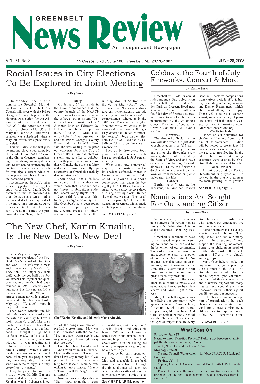
The Greenbelt News Review is a weekly newspaper that was established in 1937 as a volunteer cooperative shortly after settlement of Greenbelt, Maryland, and was originally named the Greenbelt Cooperator until its name was changed in 1954. It has been published without interruption every week since its founding, and is distributed free by a network of carriers to all city residents.

The New Deal Cafe is a restaurant, music venue and community coffee house in the historic Roosevelt Center of Greenbelt, Maryland. It is a rare example of a restaurant operated as a consumers' cooperative, as it is owned by over 200 member patrons.
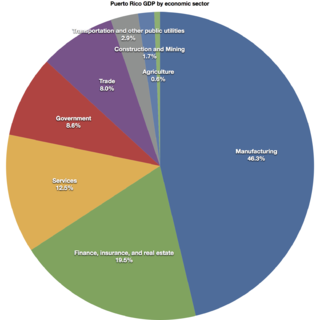
As of 2012, the real estate industry in Puerto Rico constituted about 14.8% of the gross domestic product of Puerto Rico, about 1% of all of the employee compensation on the island and, together with finance and insurance (FIRE), about 3.7% of all the employment on the jurisdiction.
Greenbelt Cooperative Publishing Association, Inc. v. Bresler, 398 U.S. 6 (1970), is a United States Supreme Court case in which the Court held that using the word "blackmail" in a newspaper article "was no more than rhetorical hyperbole" and that finding such usage as libel "would subvert the most fundamental meaning of a free press" guaranteed by the First Amendment to the United States Constitution. The ruling also touched on the plaintiff's status as a public figure.

The Greendale Historic District is a National Historic Landmark District encompassing the historic core of the village of Greendale, Wisconsin. The village core was designed in the 1930s as part of a New Deal program to establish so-called "greenbelt towns" as model suburbs, and is one of three such communities built by the federal government. It was added to the National Register of Historic Places in 2005 and designated as a National Historic Landmark in 2012.

Lenore Thomas Straus was an American sculptor and author.

















